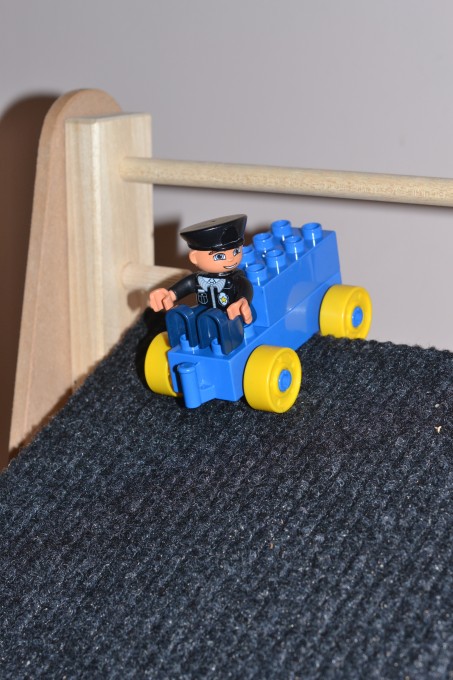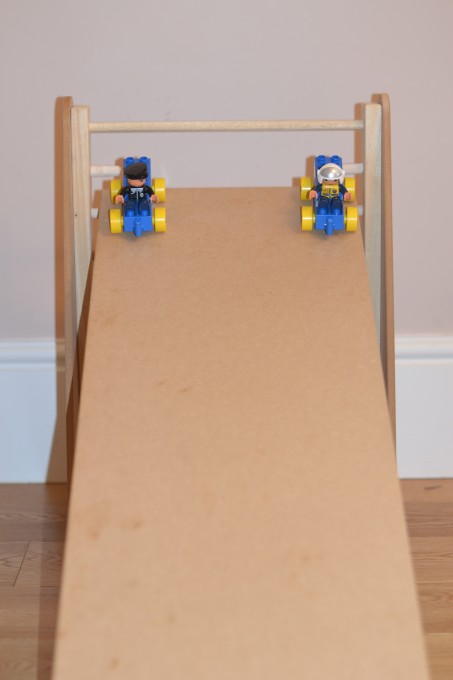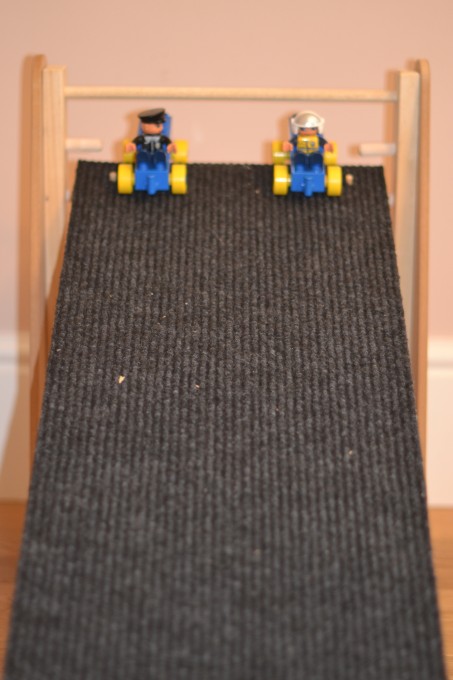Today’s activity is all about ramps, gradients and friction. We’re going to investigate how the distance travelled by a toy car is affected by the gradient of the slope and the surface of the ramp.
You’ll need
A ramp – we used a shop bought ramp set, but you could make your own with cardboard or wood and a stack of blocks or books.
Carpet or another rough surface.
Cars – LEGO or DUPLO work well.
Chalk
Tape measure
Things to think about
We’re investigating two different things in this activity, so we need to be very careful to only test one at a time and keep the other variables constant.
Do not push the car, just let it go without any force behind it.
Method
How does gradient affect distance travelled?
Variables to keep constant
Use the same car and the same ramp.
Record the distance travelled using chalk by the car for three different gradients, what do you notice?
How does the surface of the ramp affect distance travelled?
Keep the car and gradient constant this time, but record the distance travelled using a smooth and rough surface on your ramp. What do you notice?
The rough surface could be bubble wrap, carpet or a large sheet of felt.

Gathering data
We repeated each test 3 times and found the average distance travelled by the cars then recorded the data in a table.
Results
Our cars travelled further if the gradient was steeper, this is because a steeper gradient allows the car to pick up more speed.
The cars travelled less far when we used the carpet surface than when we used the smooth surface. This is because there is more friction between the car and the carpet than between the car and the smooth surface.
For younger children
Try pushing the car and comparing it with the distance travelled if the car is not pushed. Does the extra force make a difference?
Extension Activities
Is there a point where a steeper gradient makes the distance travelled smaller?
What happens if you change the surface at the bottom of the ramp?
What happens if you make the cars heavier?
Suitable for Key Stage 2
Forces and Magnets
Compare how things move on different surfaces
Working Scientifically
Last Updated on January 12, 2023 by Emma Vanstone



Leave a Reply